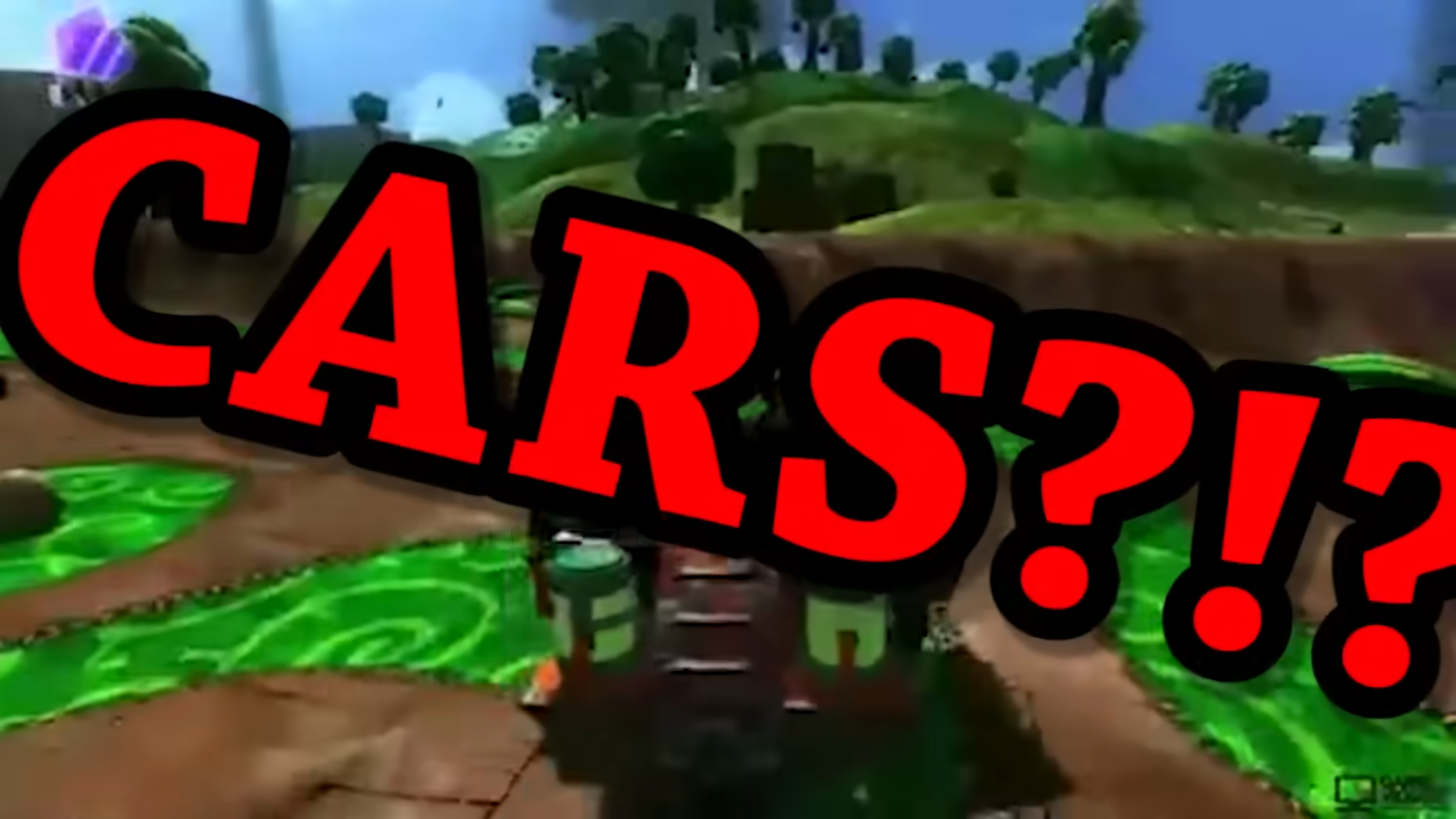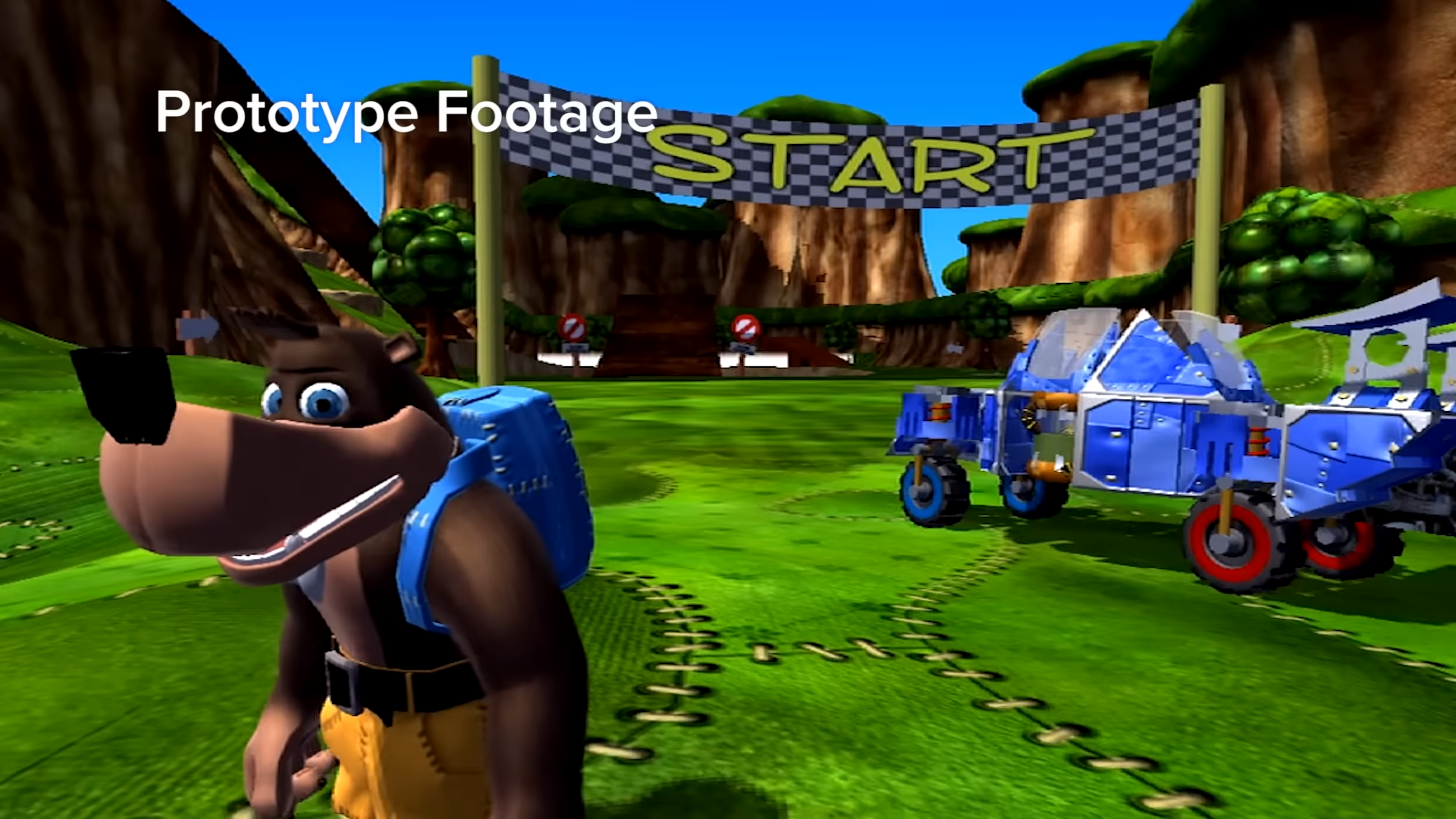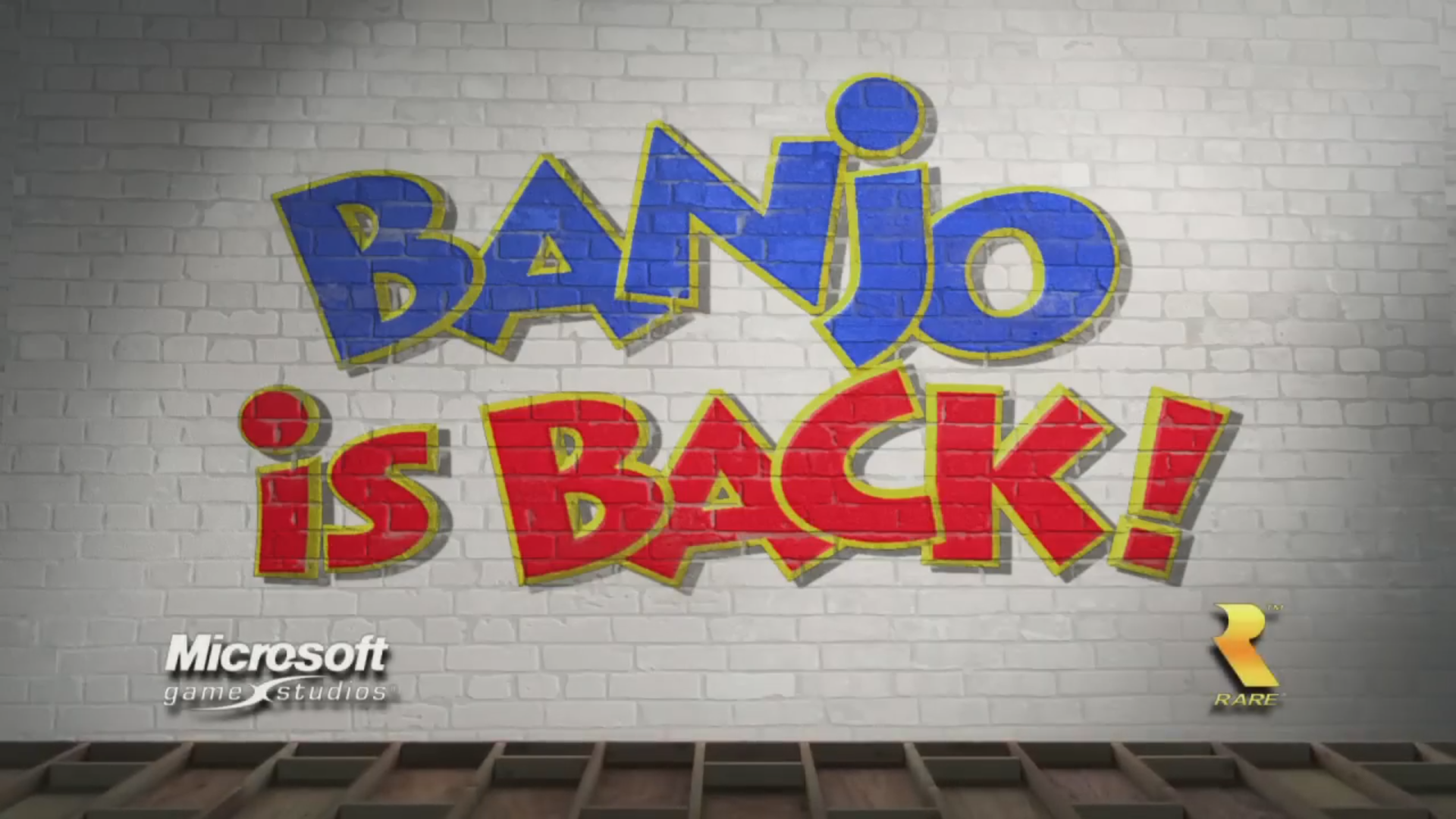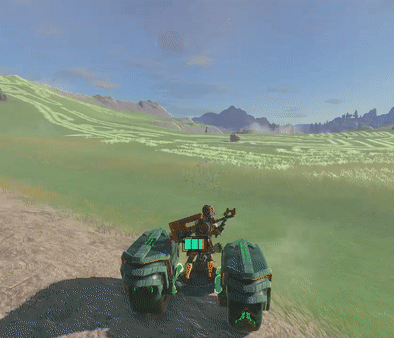Missing Sequelinks: Banjo-Kazooie: Nuts & Bolts
Games are really hard to make. Like, really hard. Way harder than you’d think, given the abundance of easily accessible tools and garbage on Steam, signalling to you that, yeah, it’s mostly morons making this.
No, games are very difficult. A good game making its way onto the shelves demands a combination of foresight, luck, and extreme amounts of skill in making mid-course corrections from nosedives, like a Boeing 737 pilot in a developing country.
The theoretical side of making games is still very much a crapshoot. Games are first built in a weirdo’s brain, then on paper, then as prototypes in small bits and pieces. Very often the versions consumers see at the end, referred to as “alpha” and “beta” are builds that have been in production for years. And in many cases, the game built in weirdo brain and on paper doesn’t end up being that good when you have something to actually play.
But this can usually be fixed through refinement. Refinement that the game the team is working on cannot get, since the goal is to release the project onto store shelves sooner rather than later. What these games need are sequels, that take the ideas presented, and put them together in a tighter fashion. Sadly, many middling games never end up getting that treatment. Hence this article.
Let’s begin by talking about a game that very much embodies the concept to me. The subject of today’s tale is…
Banjo-Kazooie: Nuts & Bolts.

Yeah, yeah, I know. I was there. Believe me, for years I thought this game sucked ass too. But I’d also never played the game. In 2017, I first had the chance to play it, and discovered that it’s in reality, pretty alright.
Banj– oh this title is too long, I’m just gonna call it Joey.
So as you've probably already understood through cultural osmosis and a tremendous amount of people bitching about it, Joey isn't about 3D platforming. It's about cars. Boy is it ever about cars. Joey is a game where you make cars to race against other cars, or to destroy other cars, or sometimes just to get more parts to make more cars, and even sometimes blow up a janitor's house.
It's a strange game that feels very of its time. It very clearly has notions of being some sort of physics sandbox title, which was popular in 2008. The creators went on to compare the game to Minecraft, but honestly, what I see the most in it is GMod. Strange physics, lopsided vehicle generation and a very freeform gameplay model.
I've come to miss the way sandboxes of this era worked. Nowadays a sandbox game's mission is a linear, psychotically strictly controlled list of events set against an open world background. Back in the 2000s, sandbox games missions consisted of a singular, very simple goal. How that goal gets achieved is mostly up to you. In Joey this allows you to find some spectacularly stupid ways of solving the challenges, or overengineer your craft so hard tht you break the mission's spine and leave it to die on the floor.
But it's hardly a perfect game. As the game progresses, more and more missions turn into rather dull fetchquests that tend to get longer and longer while barely adding any curveballs to the game. The Jinjo missions run out of new ideas about halfway through, and most of the later ones can be beat with the same vehicles you've built in the third stage. At the very end, there is simply very little the game does that it already hasn't done; it has run out of ways to push its very limited set of toys. This is one reason I have a hard time finishing the game, despite how much fun the early game is to play.
I'm not gonna touch the matters on whether or not Joey is a good Banjo game. I actually don't really have a clear opinion on that. The Banjo charm and world is a large chunk of what makes Joey tick in my eyes, and removing that would most likely make the game even more aggravating to play.
So to figure out the problems that lead to Joey's... problems, we need to venture back in time to examine how the game became what it is (cars).
Joey comes from that era of gaming where the industry hadn’t bureucratised itself to the degree it has today. Budgets had ballooned and the sizes of development teams had grown from 20-or-so to somewhere between 60 and 100 people, but there was still definite excitement from having access to big worlds and individual voices hadn’t yet been drowned out to the extent they are today. There still wasn’t a clear template for how a game was made (well, not that there still is, but nowadays people sure attempt to create them and, well, you've seen Ubisoft and all the little ubiclones).
Joey was born out of a desire to make a game that would stretch the idea of a big level. Previous games in Joey: The Franchise had been born out of a similar mindset of making big locations for players to explore. With the advent of a console generation two steps ahead of the previous Joey prequel, the developers had the opportunity to make levels about as big as they wanted. Maybe too big.
Our understanding of how exactly Joey came to be is still somewhat fuzzy, since despite a lot of the developer accounts of the creation process, very little concrete info is available. Many of Rare's employees are also massive liars and as such, most of the accounts also contradict one another. From available evidence, we can conclude that development began some time in 2004. Probably around a year was spent working on a remake of the first game, where Grunty would be competing against Banjo in a game to collect the… collectibles while the player is doing the same. As you might guess from that description, it didn’t work or get very far.

The earliest known footage of Joey is probably captured sometime in 2005 or early 2006, featuring the rectangular redesigned Banjo and a patchwork artstyle that would be adapted to Nutty Acres in the final game.
Joey was announced with no title at the Microsoft X06 event (in 2006…) with a trailer that had a shocking lack of cars. The people watching it could never have known that just two years later their hopes would be killed in a horrific drunk driving accident. You see, bears and beers don’t mix.

A lot of speculation over the years has directed hate at Microsoft for meddling with the game and turning it into a vehicle-based one, but in reality, it was probably all Rare’s doing. The developers have explained that the idea of The Car™ came from the fact that the gigantic levels made in a state of mild euphoria from all the processing power they now had were in fact so big, that the players couldn’t find the gameplay in them.
As such, the developers added vehicles to make traversing them easier. Now I know all of us non-cavemen living in the 21st century + 24 years look at this statement and go “well why the fuck didn’t they just make the levels smaller then?” but you have to understand. This was in 2005-ish and Grand Theft Auto was only 4 years old. You simply had to put a car into your otherwise unrelated foot-based game.
Perhaps now the issues with Joey start making sense. The developers never really planned out to make a game like what it ended up being,
they merely ended up stumbling onto it through various misadventures in making a game that wasn't a Car™ game.
A game is made by throwing a bunch of shit at a wall. Some of it sticks, some of it doesn't. Eventually you end up with something that works, and the game gets released to a wide "meh" from the general audiences, and disappointing metacritic scores. But once a game is done, you have estabilished a baseline for what the game is; at that point you have the tools and knowledge to tweak the game to be far better.
This is the strength of sequels: they don't just make money, they also exist to advance a previous idea to a new height by rebalancing and recontextualizing the elements you have already designed and written for your game.
 Joey is marred by its lackluster end. It's clear the team were both pressed for time and running out of ways to build on the car gameplay with the framework they had set out for themselves. There was an entire cut world, which I can imagine was removed mostly because there wasn't much to put in it. And also because making models and textures takes ages.
Joey is marred by its lackluster end. It's clear the team were both pressed for time and running out of ways to build on the car gameplay with the framework they had set out for themselves. There was an entire cut world, which I can imagine was removed mostly because there wasn't much to put in it. And also because making models and textures takes ages.
It's a game that demands a sequel. A lot of good ideas here are simply left not fleshed out, or are stretched out beyond their limits. A sequel could expand on things that aren't Car™ based, such as adding some platforming sections on foot in some levels to break up the monotony of truckin'. You could use the physics engine for more environmental puzzles, rather than simple predefined layouts. You could focus on exploration with wacky devices.
In today's world, as the gaming landscape is mostly littered with unimaginably expensive projects that set out to do nothing, like your middle-aged fat aunt chucking back her 4th glass of wine before noon while complaining about men during christmas, Joey still stands as something that wanted to experiment, but didn't quite land. It was doomed before it was ever played by anyone by its sky high expectations and the gaming landscape of the 2000s.
So we should remember Joey as the game that couldn't quite. But there is potential still left in it. Perhaps I should respect it more by calling it by its true name: Nuts and Balls. Wait shi--













